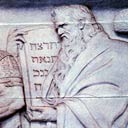In 1590, England sent an expedition to check on a colony of settlers on Roanoke Island off the coast of North Carolina. They found the settlement deserted: 90 men, 17 women, and nine children had disappeared without a trace. A search turned up nothing. The only clue was a single word carved into a post: CROATOAN.
There was a Croatoan Island nearby, with a tribe of that name. Had the colonists been killed or captured? No, there was no sign of a struggle. Had they assimilated peacefully? Then why had they left no clue where they’d gone? Had they moved to another base? Tried to return to England? Starved to death? To this day, no one knows.




